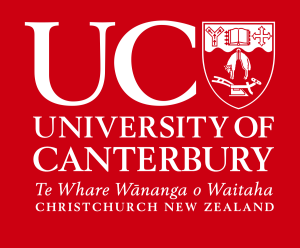Master of Disaster Risk and Resilience
- Degree Structure - Start In
- Semester 1 (February)

UC's Master of Disaster Risk and Resilience (MDRR) is a professional degree that provides an introduction to this rapidly evolving interdisciplinary field. Learn more about studying an MDRR through our Te Kaupeka Pūtaiao | Faculty of Science.
180
The United Nations defines a disaster as a disruption of social and community function, involving so many losses and destructive impacts that affected communities and regions are unable to cope using their own resources. Global efforts to reduce the impacts of disasters over the last decade have failed to keep up with growing exposure of people and assets to natural and other hazards, which is generating new risks and a steady rise in disaster-related losses. To reverse this trend, UN member nations ratified the Sendai Framework for Disaster Risk Reduction in 2015.
The Sendai Framework calls for a broader, more people-centred, preventative approach to disaster risk reduction, in which communities, government and private sectors, civil society organisations, academia, and research institutions work together to build resilience and develop collaborative disaster risk reduction practices.
This Professional Master’s degree provides an introduction to this rapidly evolving interdisciplinary field.
Aotearoa New Zealand is located on the Pacific ‘rim of fire,’ and has one of the most dynamic environments in the world. Floods, earthquakes, volcanoes, landslides, and tsunami threaten a rapidly-growing, high income economy, driving collaboration between policy, practice research, and local communities, and increasing demand for disaster risk reduction. This makes Aotearoa New Zealand an outstanding laboratory for the study of multi-hazard disaster risk and resilience.
Te Whare Wānanga o Waitaha | University of Canterbury is situated in the centre of New Zealand’s South Island, Te Tai Poutini, where the 2010-2011 Canterbury Earthquakes and the 2016 Kaikōura-Hurunui Earthquakes have had extensive and complex impacts in the central and north-east of the island. This has created considerable scope for highly integrated, cutting-edge disaster risk and resilience research.
The Professional Master's programme is taught by a multi-disciplinary team drawn from the Disaster Risk and Resilience Group in UC's Te Kura Aronukurangi | School of Earth and Environment and from Te Pū Ao | GNS Science. This partnership increases the breadth of teaching expertise, student research projects, and industry practice connections.
The programme has won awards for its innovative content and delivery modes, including from the International Association of Emergency Managers (IAEM).
To apply for the Master of Disaster Risk and Resilience (MDRR), you will need to have:
If English is your additional language, you are also required to meet UC's English language requirements.
For the full entry requirements, see the Regulations for the Master of Disaster Risk and Resilience or use the admission requirements checker.
It is recommended you apply at least a month before the start of the programme in February or July to complete the enrolment process. For more information please contact Te Kura Aronukurangi | School of Earth and Environment.
You can apply online at myUC.
See Admission and enrolment for all information on enrolling at UC.
The 180-point programme is made up of:
You may be enrolled for the Master of Disaster Risk and Resilience either on a full-time or part-time basis. It normally takes 1 year to complete (part-time up to 3 years), starting in February.
For full requirements, see the Regulations for the Master of Disaster Risk and Resilience.
Master of Disaster Risk and Resilience (MDRR) courses draw disaster risk and resilience content from social, physical, and geospatial sciences, as well as planning, law, and engineering disciplines. Innovative teaching methods include role play disaster simulation exercises, field trips to major infrastructure assets/systems and disaster hotspots, and leading guest lecturers from science, government, and industry.
MDRR students gain an understanding of:
You will also need to complete either:
2024 tuition fee estimate: $13,473 (180 points)
2025 tuition fee estimate: $14,281 (180 points)
2024 Special Programme Fee: $59,250 (180 points)
2025 Special Programme Fee: $62,100 (180 points)
2026 Special Programme Fee: $65,100 (180 points)
The MDRR is part of a suite of postgraduate qualifications at UC at the intersection of cutting-edge physical and social sciences, exploring interactions between geophysical and human environments with a focus on resilience and geophysical/social environmental dynamics – a growing area of expertise at UC.
See also the Master of Science or Doctor of Philosophy (PhD) in Disaster Risk and Resilience, led by Te Kura Aronukurangi | School of Earth and Environment.
MDRR graduates are in a position to choose between proceeding into funded doctoral programmes, or pursuing careers in disaster reduction, risk assessment, hazard assessment, and environmental management and consulting, as well as in local and regional government.
Graduates have found work in consultancies locally and internationally, in NZ Crown Research Institutes, in the National Emergency Management Agency, Toka Tū Ake EQC, in regional Civil Defence and Emergency management Groups, and in the private sector.